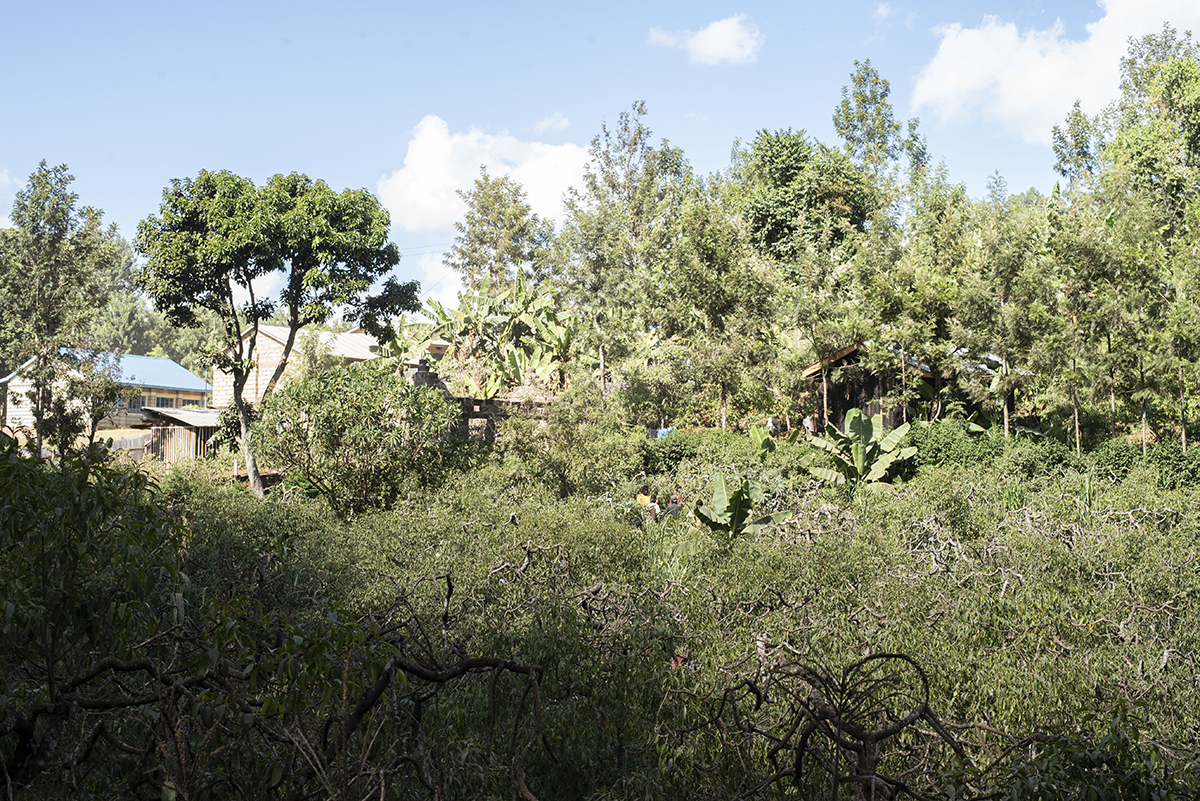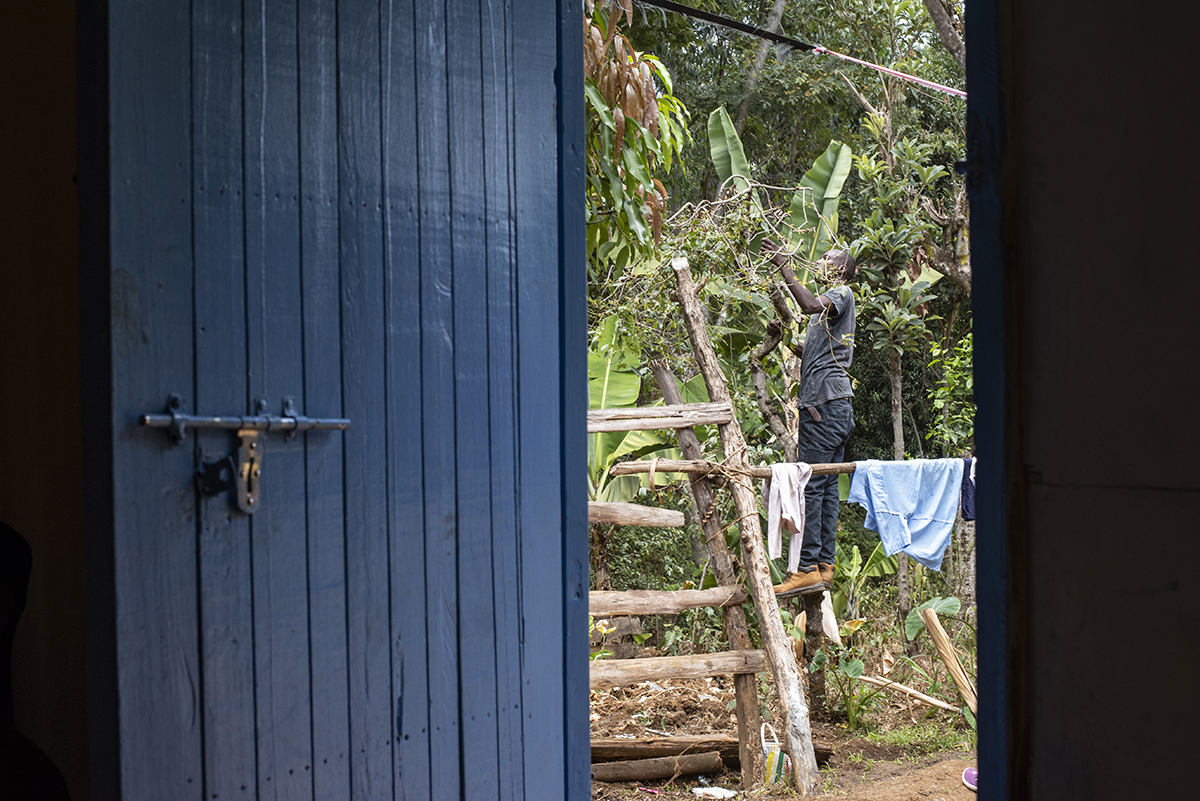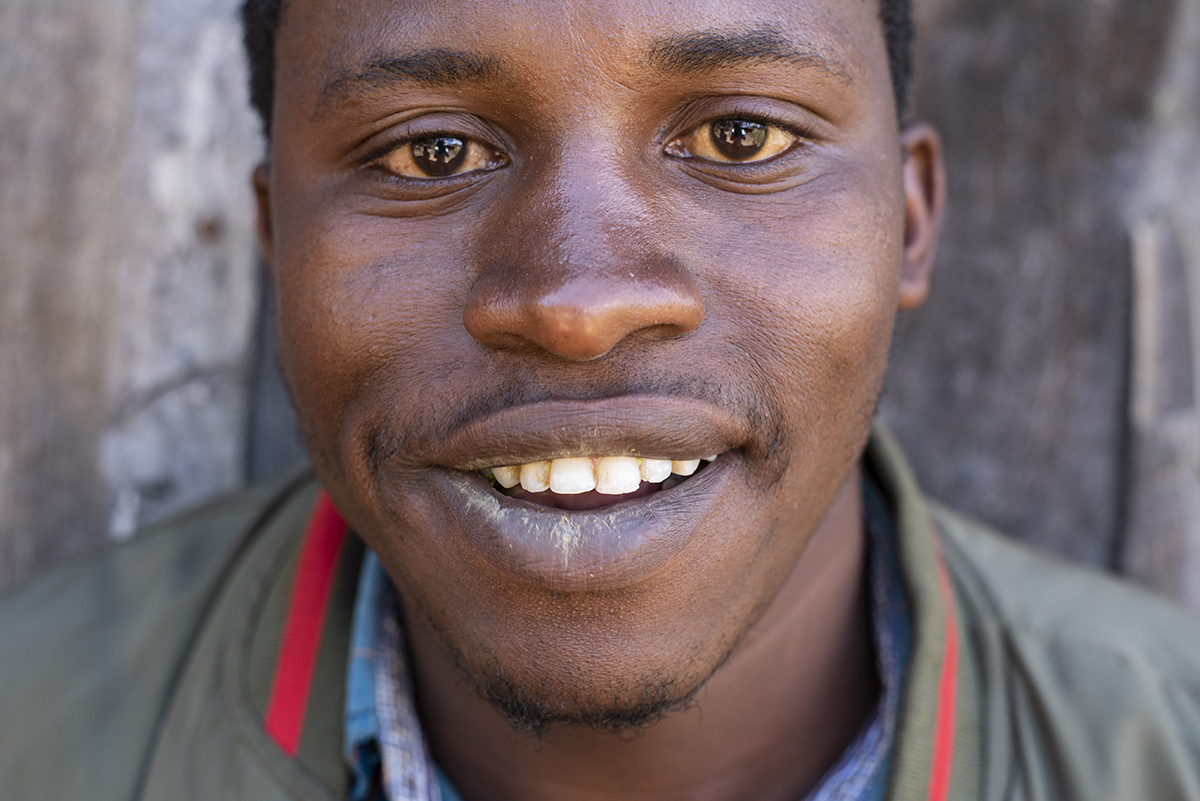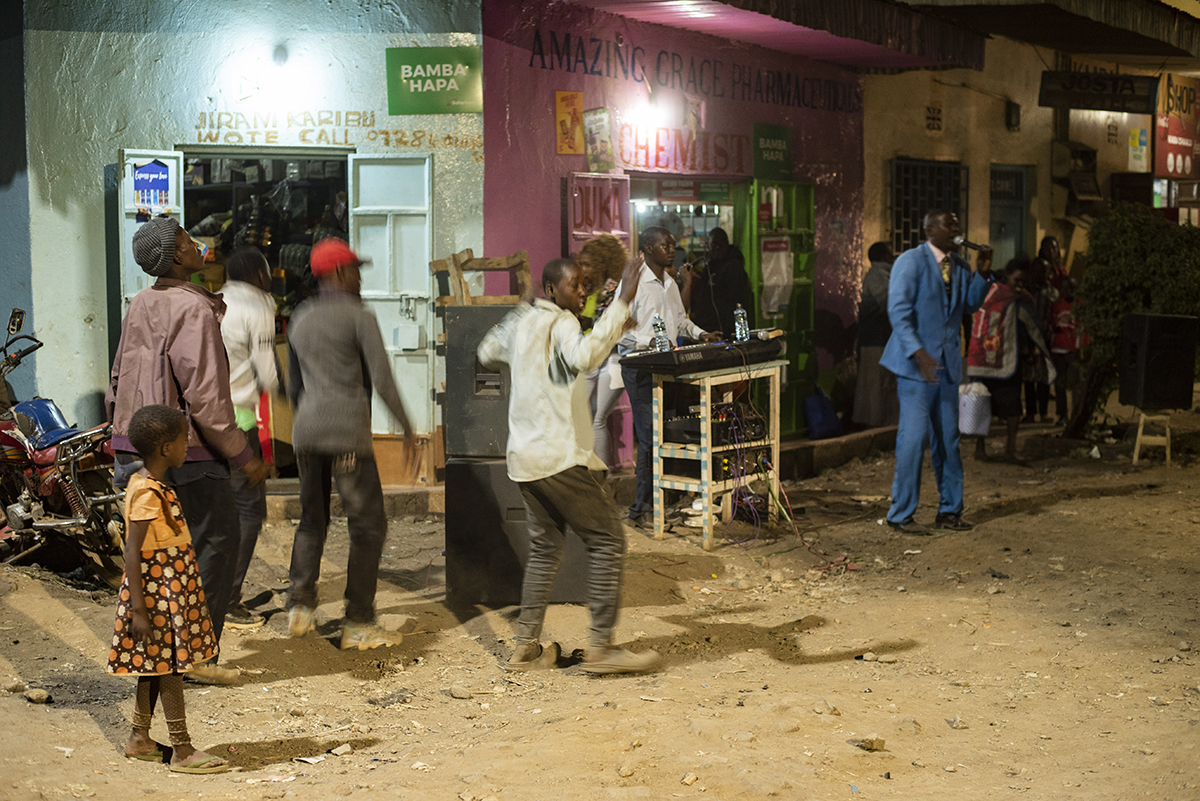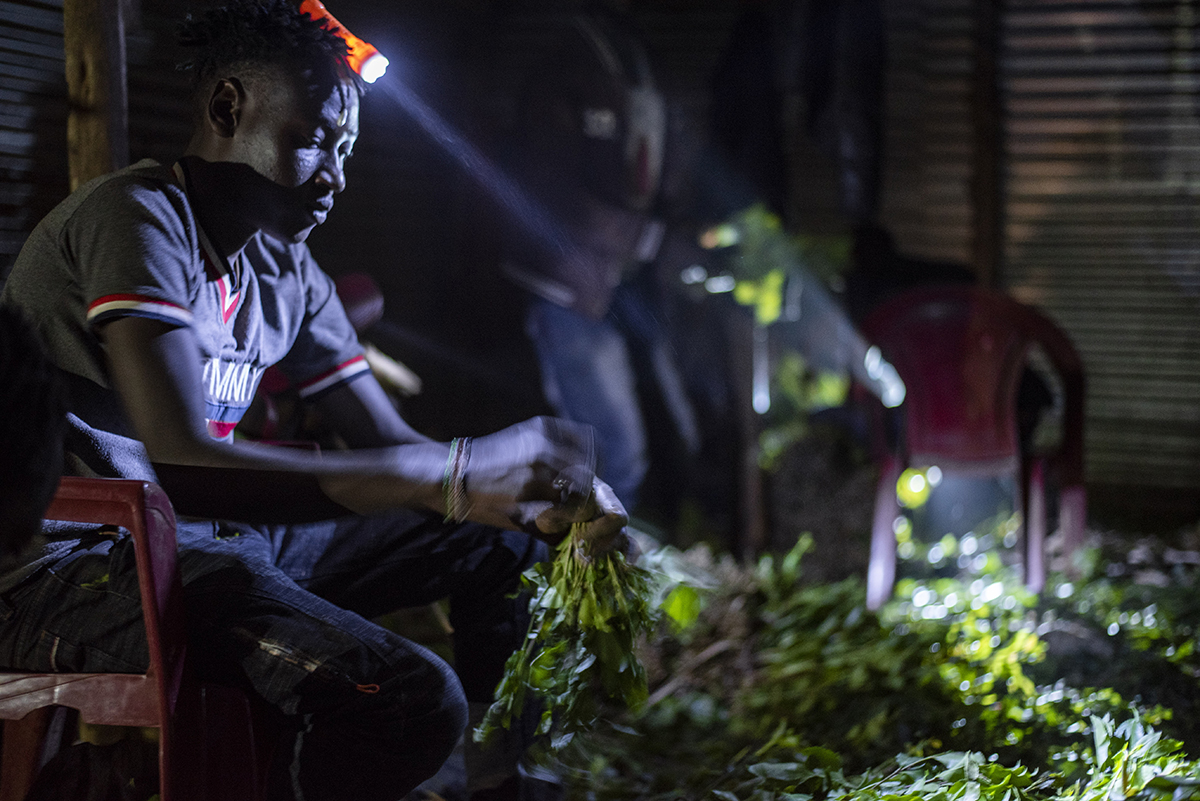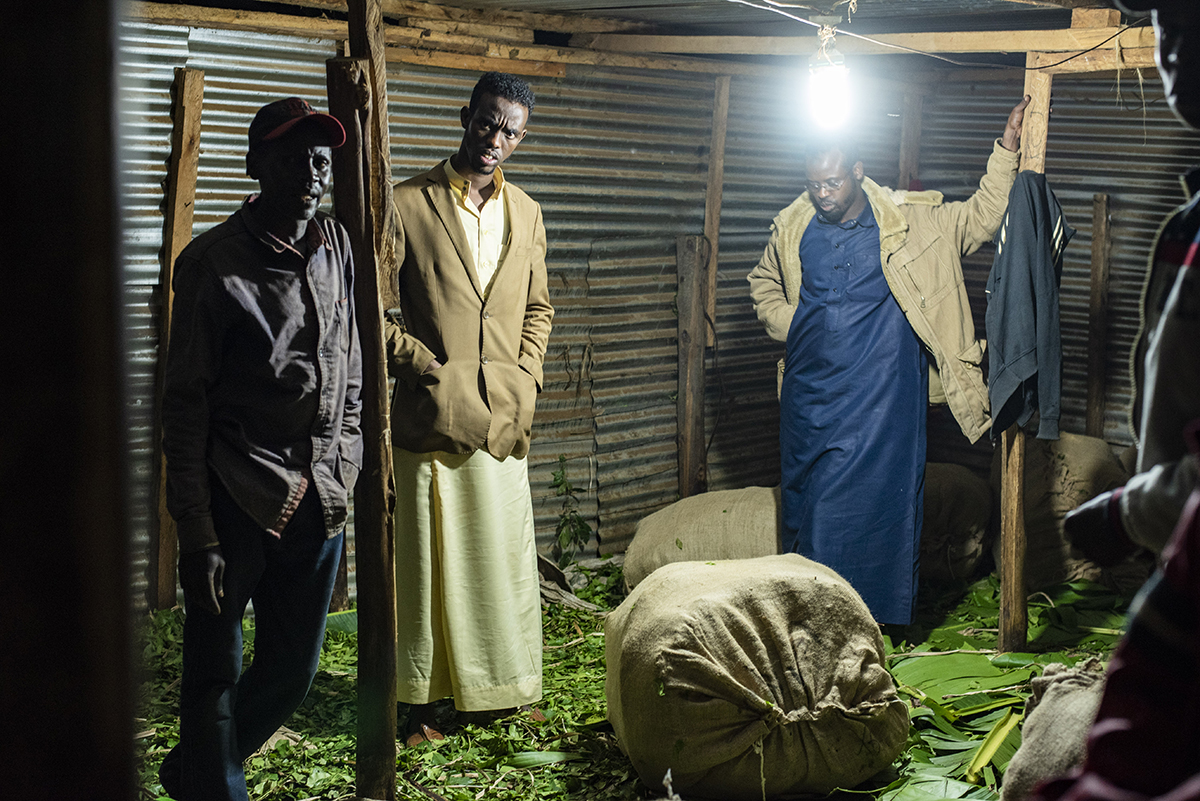Khat: the kenyan cash crop.
Between five to ten million people chew Khat daily. Most of them are in the horn of Africa. One of the primary production zones of those stems, with similar effects to amphetamines, is situated at the east of Mount Kenya. Even though it’s considered as a drug by the World Health Organization, Khat, dubbed « Miraa », is part of the local traditions, and an important source of income for the Meru region.
Maua is the Kenyan capital of khat production. This small town inhabited by a few dozen of thousand of people is situated in a hilly region near Mount Kenya, in central Kenya. This mid-size rural town is about five hours’ drive from Nairobi, the Kenyan capital. It enjoys an ideal climate and fertile ground for the cultivation of khat trees. Khat stems are constantly regenerating and are all year long harvested. Every day, they need to be delivered to their final customers in a very tight schedule, as the stems should not get dry before reaching their final destination.
The khat producers from Maua are the main suppliers for the Kenyan and Somalian market, which counts millions of daily users. Locals often referred to Khat as a blessing from god. In fact, the entire population benefit from these cash-generating stems. The landowners get comfortable rent, and the daily workers, mostly young men from the region, can enjoy a euphoric high during their hard day at work. Here, the Khat is commonly called the « cash crop » and is a coveted product, which pushes some farmers to use black magic to protect their fields. According to the Meru culture, Khat is mainly harvested and consumed by men. As for women, they are left with more conventional agriculture, such as farming vegetables, and harvesting tea plantations, a heritage from the colonization time in this hilly region.
This activity also has an important local economic impact, as the local government also perceives tax incomes from each car transporting Khat out of town. The Somali community is the main khat consumer, and control the khat supplies outside of Meru county. Through very efficient logistics, its traders can dispatch tons of Khat, towards Mogadishu markets, in less than twelve hours, transporting the harvest to Nairobi through customized pick-up, where it is flown to Mogadishu through chartered planes.
The Somali community is sometimes wrongly associated to the terrorist organization Al-Chebab which organized the recent attacks in Kenya, but in Maua, native people and Somali diaspora are interdependent and are cooperating, sharing the fruits of this cash crop.
Other photo series from Kenya (here).




